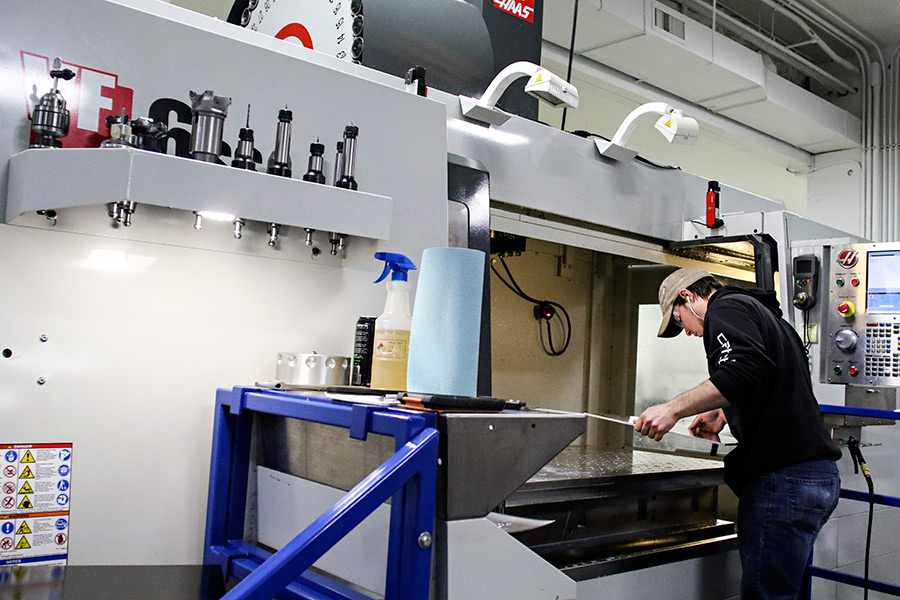As the Flathead Valley, and Montana as a whole, continue to adjust and adapt to a post-recession economy, the technology industry continues to be a bright spot, with strong markets, high-paying jobs, and expansion in 2015.
According to the second annual report on Montana’s high-tech industries, released by the Bureau of Business and Economic Research at the University of Montana in February, high-tech wages comprise about 5.2 percent of the state’s total wages, and those wages are double the overall average and higher than all but three of the state’s industries.
“Tech, in terms of the growth, is pretty remarkable,” BBER director Patrick Barkey said. “The pay is pretty decent. It checks a lot of the boxes people are looking for.”
The February report was commissioned by the Montana High Tech Business Alliance, a member-driven group of high-tech businesses and organizations statewide that started in 2014.
Membership to the HTBA doubled in 2015, according to the report, from 101 businesses in 2014 to 202 last year. Barkey said the survey does not account for every tech-based business in Montana, but the responses, along with government data, allow for inferences for the industry statewide.
On the whole, tech is growing, Barkey said, but it is not yet a massive industry. Regardless, it’s an industry full of optimism about its future. According to the survey, HTBA members expect to add 940 new jobs in 2016, representing a 19.3 percent increase. The average salary for HTBA businesses is $56,800, and those businesses expect to increase wages by 5 percent in 2016.
Part of what makes the technology industry tough to pin down is the dynamic definition of a tech business. The U.S. Bureau of Labor Statistics considers a business high-tech if it employed a high proportion of scientists, engineers, and technicians; had a high proportion of research and development employment; produced a high-tech product; or used high-tech production methods.
With this definition, the BBER report found that Montana’s tech industry saw $916 million in wages in 2015, up 4.5 percent from 2014’s $867 million.
Barkey said tech’s proliferation can be seen in other mainstay industries, such as wood products.
“If you look at the way the wood products industry does with tech, there’s some gee-whiz things going on there that most people don’t know about,” he said.
One of the largest hurdles facing high-tech businesses in Montana is filling the jobs with skilled workers. Twenty-three percent of the HTBA businesses said attracting talent was the largest impediment to growth. Another 17.7 percent said there’s a need to educate Montana’s workforce for these jobs.
In the Flathead, the shuddering economy brought on by the recession translated to new course offerings at Flathead Valley Community College. The college worked with local businesses to create programs that would prepare students for the jobs available here in technology and manufacturing, which often go hand in hand.
According to the college, three programs in advanced manufacturing – machining, electronics, and industrial maintenance – have attracted many students, with 51 earning credentials since the programs started in 2013.
While it is still difficult to quantify the number of students using their certifications for local jobs – many used one program to springboard into other academic areas – there have been successes.
Greg Smith, general manager at Thompson Precision machining and fabrication, said he hired Andy Witte straight out of the college program and has been pleased with Witte’s abilities.
“The guy is just a bright rising star,” Smith said. “He’s actually gotten four dollars of increased pay per hour since he hired on.”
Machining at the shop is very technical, since it’s largely computer controlled, but there’s still room for artistic inspiration, Smith said. So when Witte brought his skills from FVCC, the talented machinists in the shop were able to teach him with real-world experience.
“We’re completely pleased. I think the proof’s in the pudding with his raise. He hasn’t been here a year yet. I think that is the most telling thing you can say,” Smith said. “He was positioned perfectly to work with the other artists and machinists here.”
Another challenge for attracting labor to the tech industry is Montana’s relative geographical isolation. Barkey said it was ironic that tech is one industry that doesn’t have to be defined by geography, but the people within it tend to group together.
The Flathead is one of the hotbeds for tech development in Montana right now, he said, along with Gallatin County.
At Thompson Precision, Smith said his company is lucky to have found someone like Witte, who works hard and is self-motivated, and he believes there are more workers like that out there, needing the education to build successful careers.
“Those people who are willing to go to school and pay their money and take a two-year vocational class completely of their own volition shows some wherewithal,” Smith said. “I’m thinking that we will have more opportunities to hire people from FVCC.”
